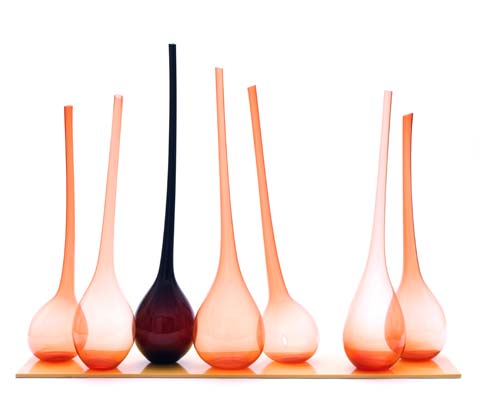About the Still Life Series
 The work restores the Still Life genre to three dimensions from the mode of two dimensional painting.
The work restores the Still Life genre to three dimensions from the mode of two dimensional painting.
Svetlana Alpers in her 'The Art of Describing – Dutch Art in the Seventeenth Century' 1discusses the way that still life painters drew on the quality of the craft of the maker to impart beauty within the accoutrements of domestic life, at a time when the ascendancy of fine art was overtaking the status of making. Like Dutch Still Life painting, my compositions are heavily dependent on the qualities of the material; both color and texture are as important to me as the formal composition. It is also important to see the hand of the maker in the work; those imperceptible quirks of manufacture that machine can not replicate.
In my work, the group is seen as a composition whereby the whole is far greater than merely a collection of individual components. As the majority of the objects feel familiar to a viewer I can explore altering the way that objects are perceived because of their placement and relationship to one another. However equally the use of glass: it's transparency, fragility and impermanence then also relates to Memento Mori, one of the underlying components of the original still life genre. .